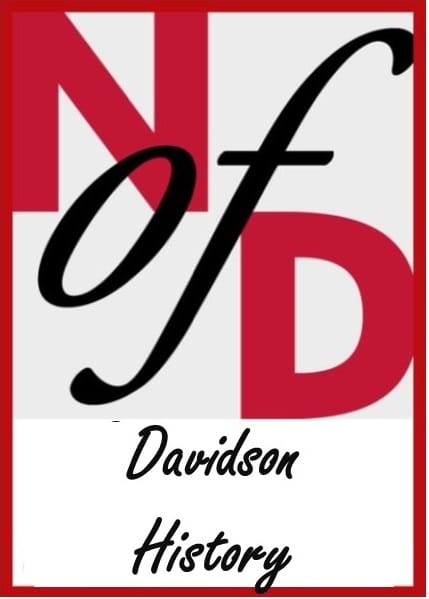NEWS
Davidson College’s Humble Beginnings
 On January 17, 1837, the Cheraw Gazette published an account of the fledgling Davidson College, taken in part from the Southern Christian Herald. Projected to open in March of that year, the new institution would have three departments.
On January 17, 1837, the Cheraw Gazette published an account of the fledgling Davidson College, taken in part from the Southern Christian Herald. Projected to open in March of that year, the new institution would have three departments.
The first was the Teacher’s Department in which “two objects are contemplated — instruction in the various branches of a common English Education, and the preparation of young men intending to become teachers of common Schools.” The subjects to be covered were reading, writing, common arithmetic and surveying, English grammar, geography, and “The most approved method of teaching common Schools.”
Within the teacher’s department would be a preparatory classics school, designed to prepare students for college with the study of Latin, Greek, English grammar, arithmetic, and geography. “Only after examination in these subjects can a student be granted admission to the college.”
The college itself would feature the study of Greek, Latin, mathematics, natural philosophy [a philosophical study of physics], Stewart’s Philosophy of the Mind [based on Sir Francis Bacon’s method of inductive reasoning], Paley’s moral philosophy, logic, astronomy, and rhetoric.” Paley’s moral philosophy defined morality as “the doing good to mankind, in obedience to the will of God, and for the sake of everlasting happiness.” In addition, “weekly exercises in Speaking and Composition will be required through the whole course, and the President will lecture on the Evidences of Christianity.”
The college would also stress the importance of manual labor by the students: “Our primary object in connecting manual labor with the Institution is, to secure the health of the pupils. We believe that labor, especially agricultural labor, will give to the pupils a healthful exercise, and at the same time make some considerable deduction from their expenses. Every student will be required to labor three hours in the day.”

This mural, painted by Frank Long of Kentucky, later than 1850, shows completed Phi and Eu Halls. It also shows some of the small dormitories and the chapel/classroom building at the end.
Much had already been accomplished, with the purchase of a “valuable farm” and the solicitation of donations and pledges of between $35,000 and $40,000 (over $900,000 in today’s money). Robert Hall Morrison was named the college’s president and professor of moral and mental philosophy and the evidences of Christianity. Reverend Patrick J. Sparrow would teach languages and Mortimer Johnson, who had graduated from Jefferson College in Pennsylvania, would serve as tutor. Able Graham of Rowan County would be the steward and superintendent. Work had begun on the college’s first seven buildings, including five dormitories of which Elm and Oak Row still stand. The others were homes for Morrison and Sparrow, and a dining hall for students, located where the Guest House is now. The campus was laid out in two rough rectangles, with an additional building for the chapel and four classrooms in the center. There was a fledgling library, which contained some “very valuable” books, obtained both by purchase and donation. Churches and individuals were encouraged to donate books, and on March 7, 1837, the Cheraw Gazette suggested to its readers that each person contribute one book to the library. According to the article, “Books on any subject will be thankfully received.”
The school year would be composed of two five-month semesters, and tuition would be minimal. The cost for a semester was $15 for the preparatory school and the college, and the students in the teacher’s department paid $10 per session. Board for one session was $30, with laundry and light not included. The deduction for manual labor decreased these prices significantly. Those with the most ability to work received a $15 deduction per semester, those less able $12, and those least able, $9. The college opened in 1837 with 65 students. The first class of eleven students graduated in1840.
By 1858, a scant twenty years after the college had opened, there were 112 students enrolled, and a large new academic building, named for donor Maxwell Chambers, graced the campus. The original Chambers Building held classrooms, laboratories, a commencement hall and 72 dormitory rooms. The faculty had tripled. The campus itself, however, was nothing like the campus today. There was only one clump of small trees near Philanthropic Hall, and the rest of the grounds were either uncared for or used for vegetable gardens. The Civil War would severely impact the progress of the fledgling college, but afterwards it thrived, becoming the well-respected institution we know today.
Nancy Griffith
Nancy Griffith lived in Davidson from 1979 until 1989. She is the author of numerous books and articles on Arkansas and South Carolina history. She is the author of "Ada Jenkins: The Heart of the Matter," a history of the Ada Jenkins school and center.


